Discover the top 10 American native plants that thrive indoors, bringing a touch of natural beauty to your home. From vibrant flowers to lush foliage, these low-maintenance indoor plants will add life and charm to any living space.
Nature has a unique way of captivating our senses and bringing serenity to our living spaces. While outdoor gardens are a delight, not everyone has the luxury of a backyard or balcony. Fortunately, indoor gardening offers a wonderful opportunity to connect with nature from the comfort of your home. In this article, we’ll explore the Top 10 American native plants that not only thrive indoors but also add a touch of natural charm to your living spaces.
1. Snake Plant (Sansevieria trifasciata)
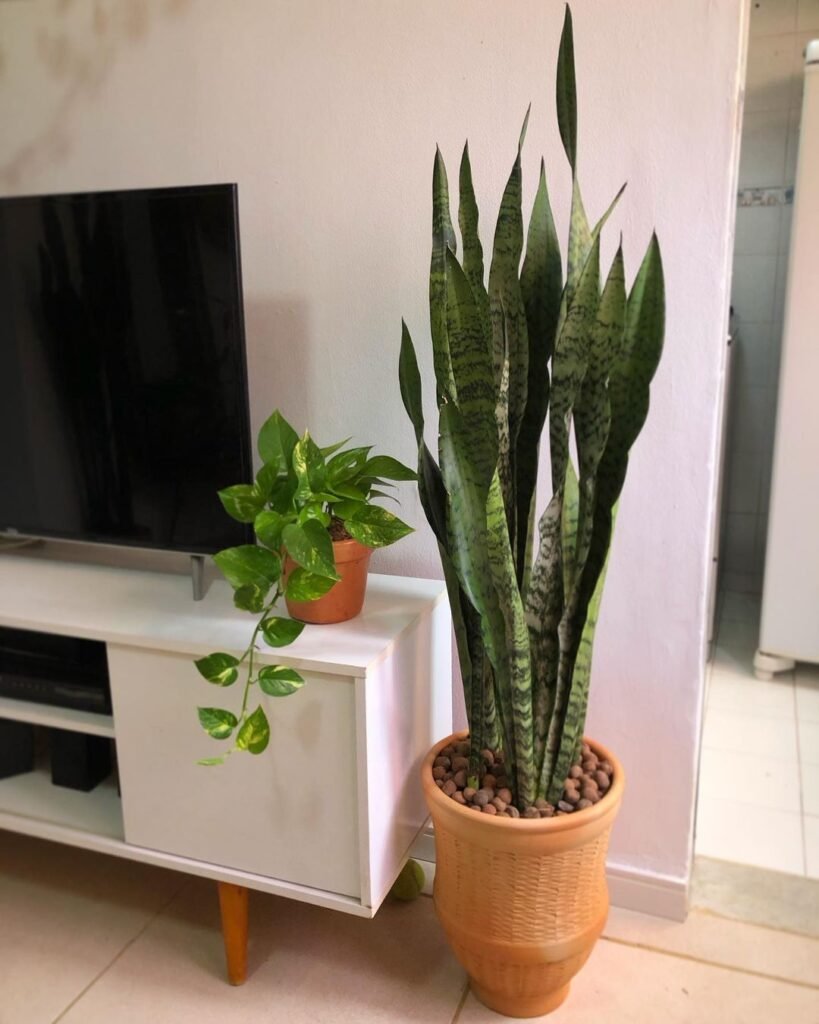
Here’s a short chart with information about Snake Plant (Sansevieria trifasciata):
| Aspect | Information |
|---|---|
| Botanical Name | Sansevieria trifasciata |
| Plant Type | Succulent, Evergreen Perennial |
| Zones | 9-11 |
| Exposure | Bright, indirect light |
| Bloom Time | Infrequent flowering |
| Height/Spread | 1-4 feet tall, 1-2 feet wide |
Native to parts of Africa and southern Asia, the snake plant has become a beloved houseplant in the United States. Its architectural, upright leaves with vibrant green and yellow patterns make it a striking addition to any room. Snake plants are incredibly low-maintenance, tolerating low light conditions and irregular watering, making them perfect for busy households or novice plant parents.
2. Pothos (Epipremnum aureum)
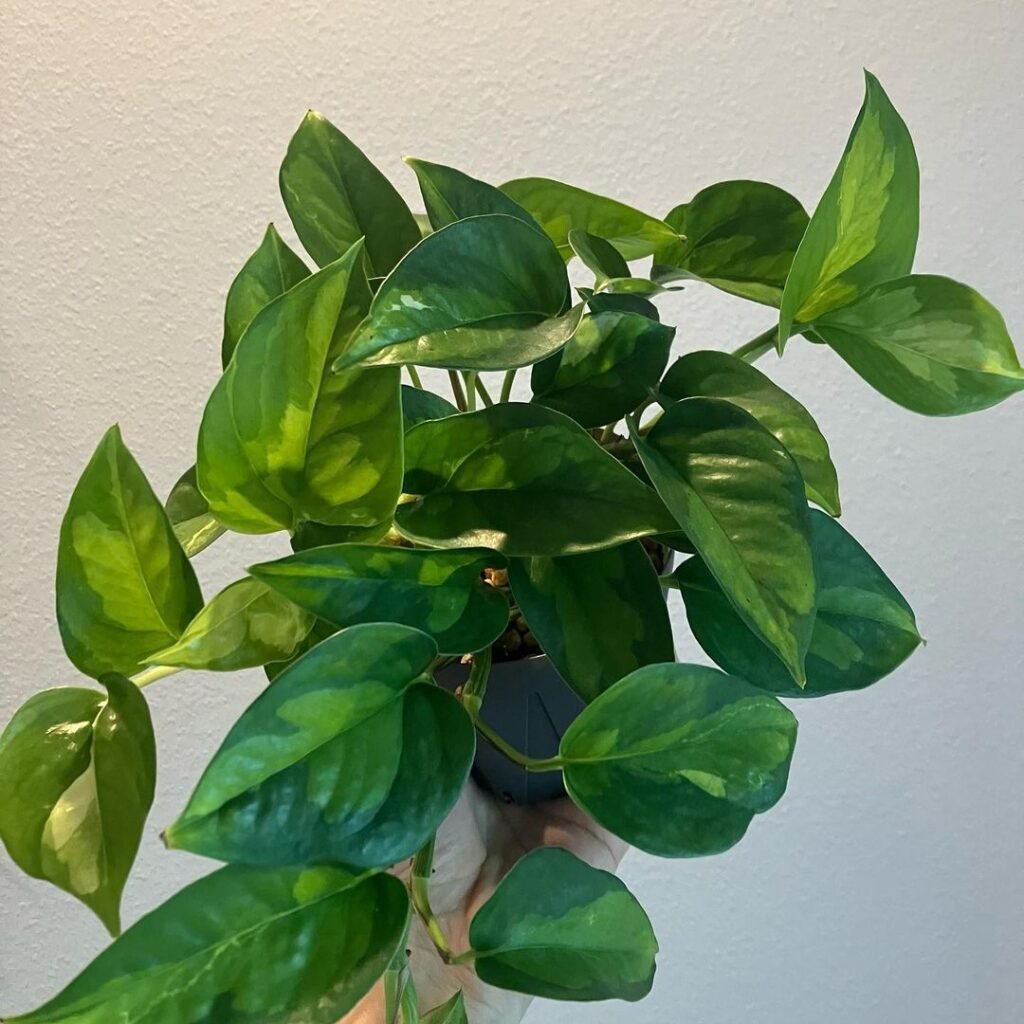
Here’s a short chart with information about Pothos (Epipremnum aureum):
| Aspect | Information |
|---|---|
| Botanical Name | Epipremnum aureum |
| Common Names | Pothos, Devil’s Ivy |
| Plant Type | Vine, Evergreen Perennial |
| Zones | 10-11 |
| Exposure | Bright, indirect light |
| Height/Spread | Vines can reach 6-10 feet |
Originating from the forests of Mexico and the Caribbean, the pothos is a trailing vine known for its heart-shaped leaves and versatility. With its ability to thrive in a wide range of light conditions and forgiveness when it comes to watering, the pothos is an excellent choice for beginners. Its cascading vines add a touch of natural elegance to hanging baskets or shelves.
3. Peperomia (Peperomia spp.)
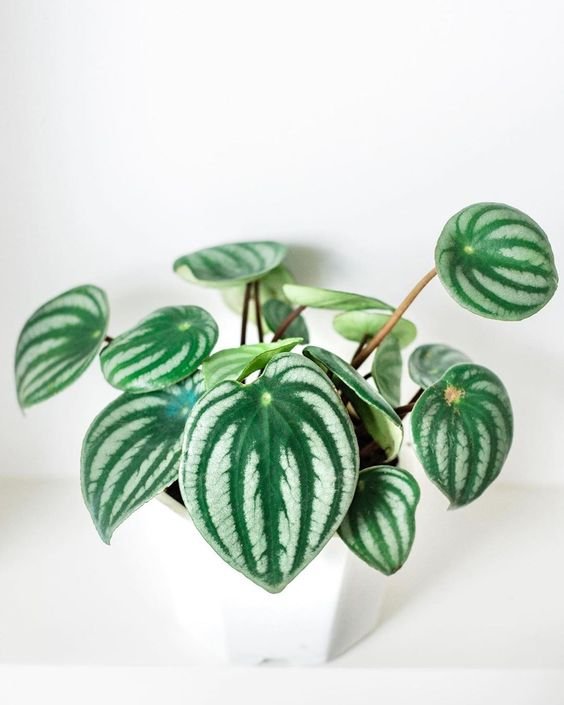
Here’s a short chart with information about Peperomia:
| Aspect | Information |
|---|---|
| Botanical Name | Peperomia spp. |
| Plant Type | Perennial, Succulent |
| Zones | 10-11 (typically grown indoors in colder climates) |
| Exposure | Bright, indirect light |
| Bloom Time | Infrequent, small flower spikes |
| Height/Spread | Varies by species, typically 6-12 inches tall |
This diverse genus of small, compact plants, native to parts of Central and South America, offers a variety of leaf shapes, textures and colors. Peperomias are perfect for adding visual interest to desks, shelves, or tabletops. With their minimal care requirements and tolerance for low light, they make excellent indoor companions for even the busiest of plant enthusiasts.
4. Zebra Plant (Calathea zebrina)
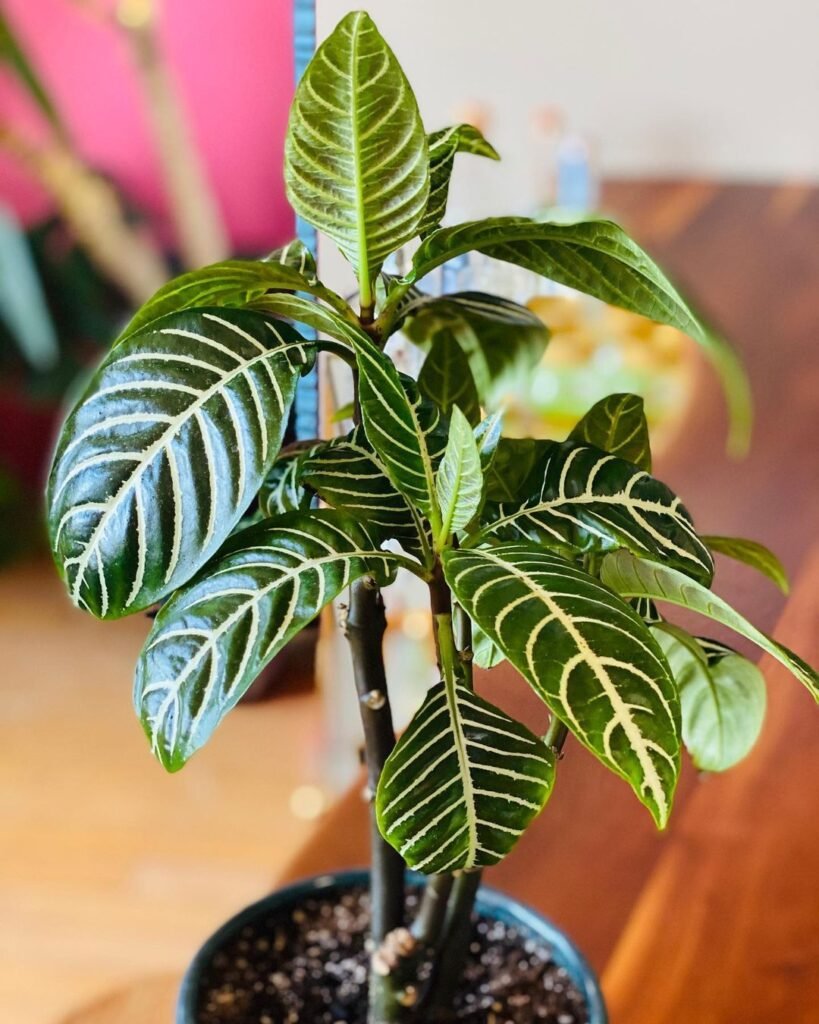
Here’s a short chart with information about the Zebra Plant (Aphelandra squarrosa):
| Aspect | Information |
|---|---|
| Botanical Name | Aphelandra squarrosa |
| Common Names | Zebra Plant |
| Plant Type | Tropical Perennial |
| Zones | 10-12 |
| Exposure | Bright, indirect light |
| Bloom Time | Spring to summer |
| Height/Spread | 1-3 feet tall, 1-2 feet wide |
The zebra plant, native to Brazil, is a true showstopper with its striking, oval-shaped leaves adorned with vibrant green stripes and purple undersides. This tropical beauty thrives in bright, indirect light and high humidity, making it a great choice for bathrooms or well-lit rooms. With proper care, the zebra plant will reward you with its stunning foliage and lush, upright growth.
5. Spider Plant (Chlorophytum comosum)
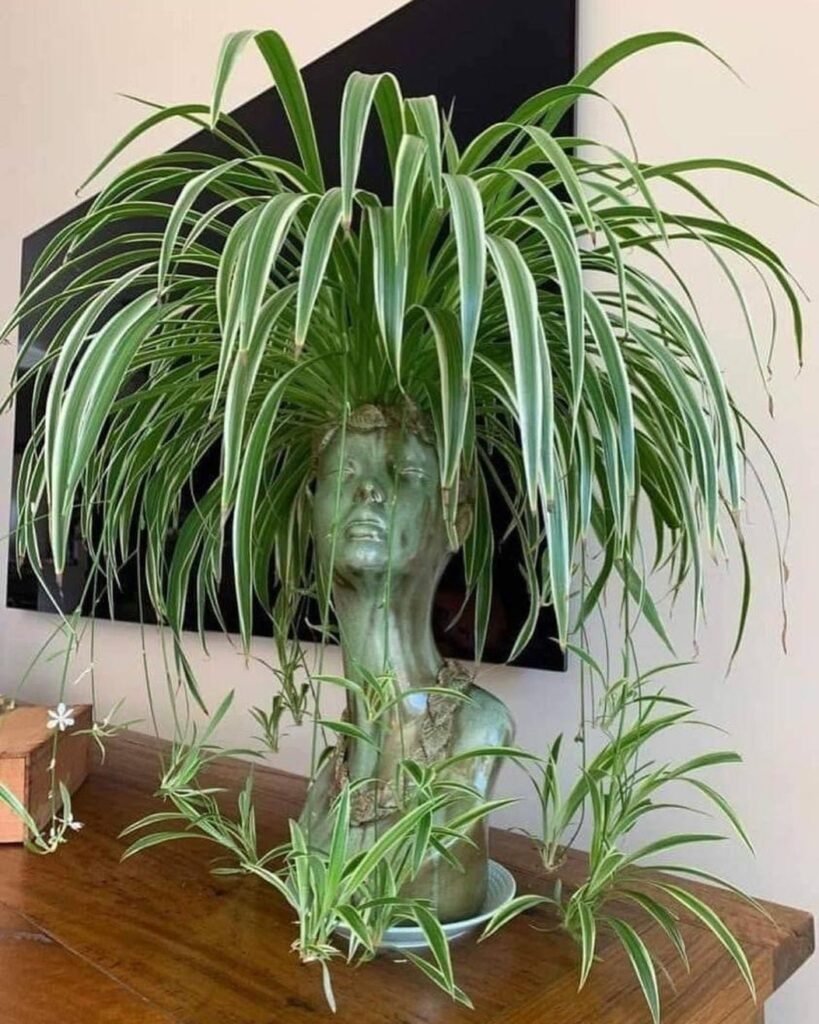
Here’s a short chart with information about the Spider Plant (Chlorophytum comosum):
| Aspect | Information |
|---|---|
| Botanical Name | Chlorophytum comosum |
| Common Names | Spider Plant, Airplane Plant |
| Plant Type | Herbaceous Perennial |
| Zones | 9-11 |
| Exposure | Bright, indirect light |
| Bloom Time | Summer |
| Height/Spread | 1-2 feet tall, 1-2 feet wide |
Originating from coastal regions of South Africa, the spider plant has become a beloved indoor companion worldwide. Its arching, grassy leaves and cascading “spiderettes” (baby plants) add a graceful touch to any space. Spider plants are known for their air-purifying abilities and tolerance for a range of light conditions, making them a versatile and low-maintenance choice.
6. Christmas Cactus (Schlumbergera bridgesii)
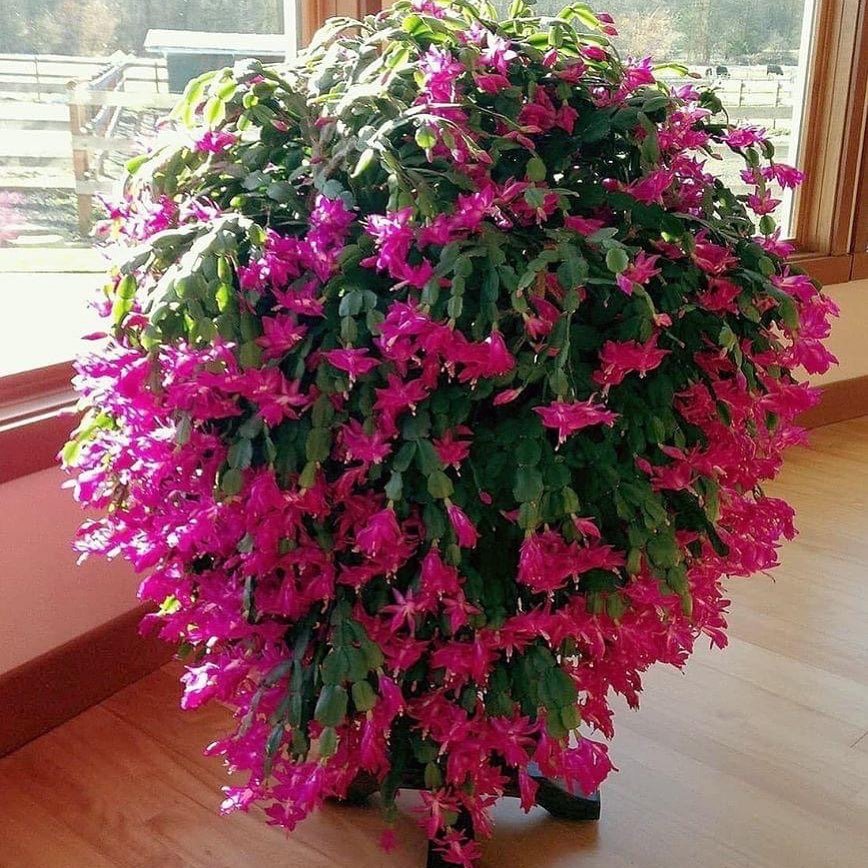
Here’s a short chart with information about the Christmas Cactus (Schlumbergera bridgesii):
| Aspect | Information |
|---|---|
| Botanical Name | Schlumbergera bridgesii |
| Common Names | Christmas Cactus, Holiday Cactus |
| Plant Type | Succulent, Epiphytic |
| Zones | 10-12 (typically grown indoors) |
| Exposure | Bright, indirect light |
| Bloom Time | Late fall to winter |
| Height/Spread | 1-2 feet tall, 1-2 feet wide |
Despite its name, the Christmas cactus is native to the coastal mountains of Brazil and can be grown indoors year-round. With its flat, segmented stems and vibrant blooms in shades of red, pink or white, this unique succulent adds a festive touch to any room. Christmas cacti are relatively easy to care for, requiring well-draining soil and moderate watering.
7. Air Plant (Tillandsia spp.)
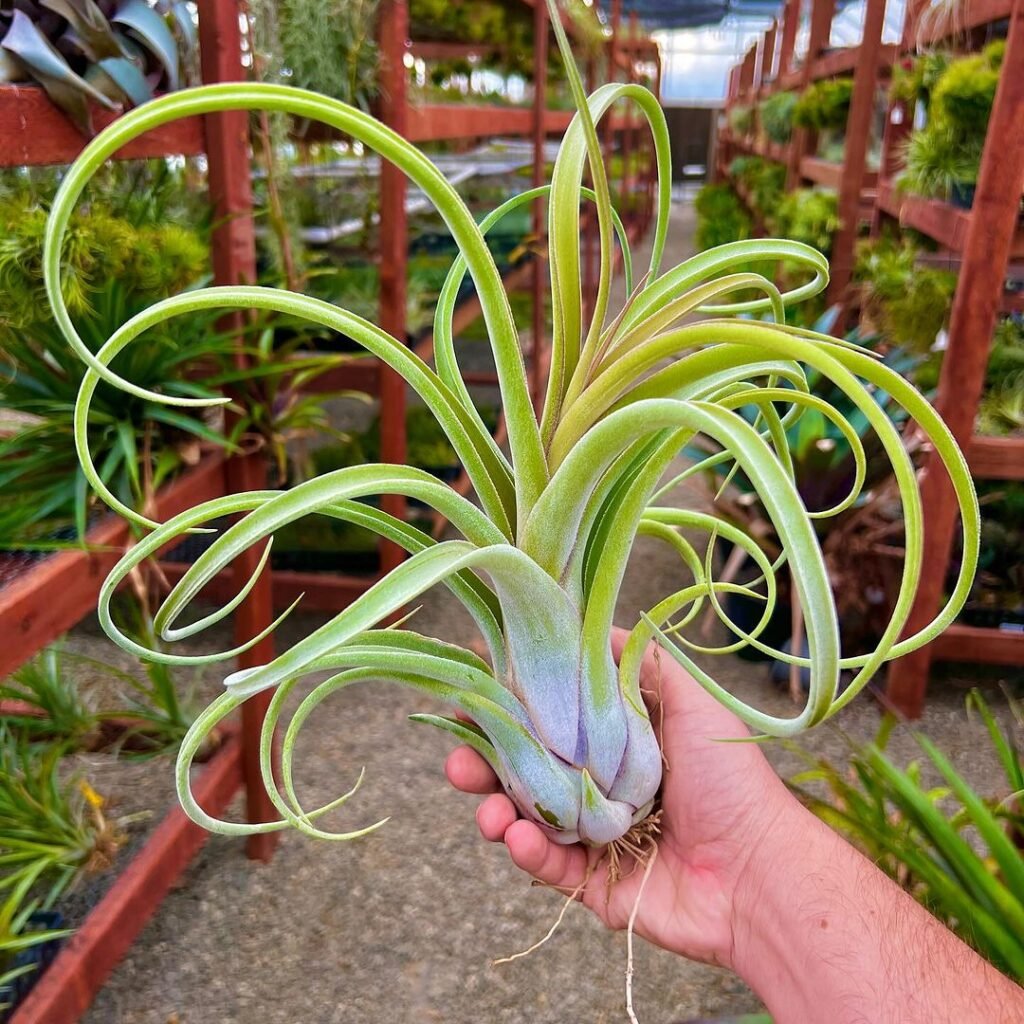
Here’s a short chart with information about Air Plants (Tillandsia spp.):
| Aspect | Information |
|---|---|
| Botanical Name | Tillandsia spp. |
| Common Names | Air Plant |
| Plant Type | Epiphytic |
| Zones | 10-11 (typically grown indoors) |
| Exposure | Bright, indirect light |
| Bloom Time | Varies by species |
| Height/Spread | Varies by species, usually compact |
Native to the Americas, air plants are a fascinating and low-maintenance addition to any indoor garden. These unique plants absorb moisture and nutrients from the air, requiring no soil to thrive. With their quirky shapes and colors, air plants can be displayed in creative ways, such as mounted on driftwood or nestled in glass terrariums, adding a touch of whimsy to your home.
8. Peace Lily (Spathiphyllum spp.)
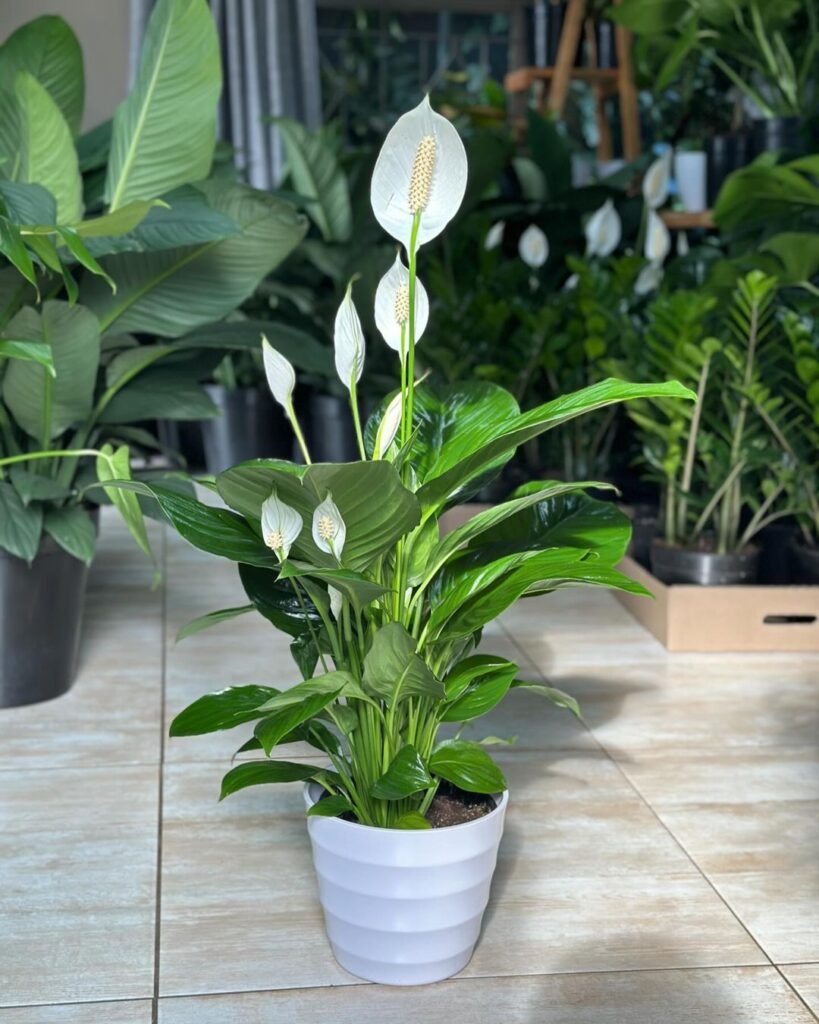
Here’s a short chart with information about the Peace Lily (Spathiphyllum spp.):
| Aspect | Information |
|---|---|
| Botanical Name | Spathiphyllum spp. |
| Common Names | Peace Lily, White Sails |
| Plant Type | Herbaceous perennial |
| Zones | 10-11 (typically grown indoors) |
| Exposure | Indirect light |
| Bloom Time | Spring to summer |
| Height/Spread | 1-4 feet tall, 1-3 feet wide |
Originating from the tropical regions of the Americas, the peace lily is a popular indoor plant known for its glossy, dark green leaves and striking white spathes (modified leaves that resemble flowers). These resilient plants thrive in low to medium light conditions and are excellent at purifying indoor air. With proper care, peace lilies will grace your home with their elegant blooms and lush foliage.
9. Sempervivum (Sempervivum tectorum)
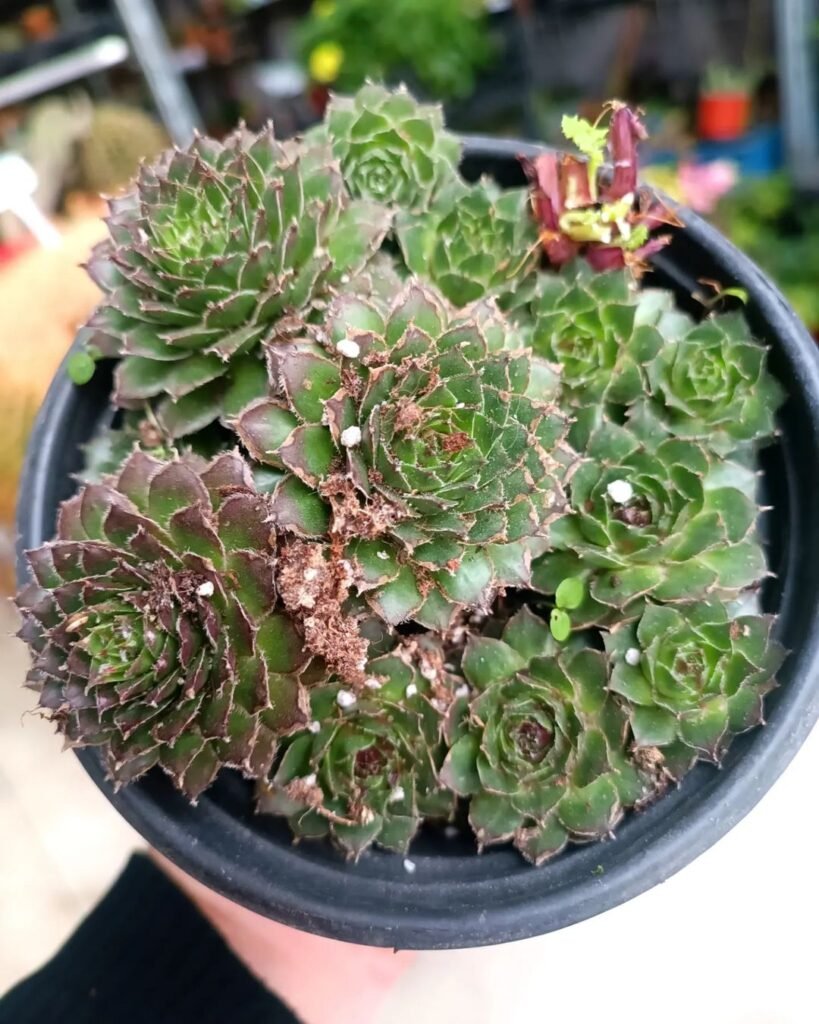
Here’s a short chart with information about Sempervivum (commonly known as Hen and Chicks):
| Aspect | Information |
|---|---|
| Botanical Name | Sempervivum spp. |
| Common Names | Hen and Chicks, Houseleek |
| Plant Type | Succulent, Perennial |
| Zones | 3-8 (depending on species) |
| Exposure | Full sun to part shade |
| Bloom Time | Summer |
| Height/Spread | 3-6 inches tall, spreads 6-12 inches |
Also known as the “hen and chicks” plant, Sempervivum is a genus of succulents native to the rocky regions of North America. These adorable rosette-forming plants come in a variety of colors and textures, making them a charming addition to succulent gardens or dish gardens. Sempervivums are low-maintenance and drought-tolerant, making them perfect for those with a tendency to forget to water their plants.
10. Rattlesnake Plant (Goeppertia spp.)
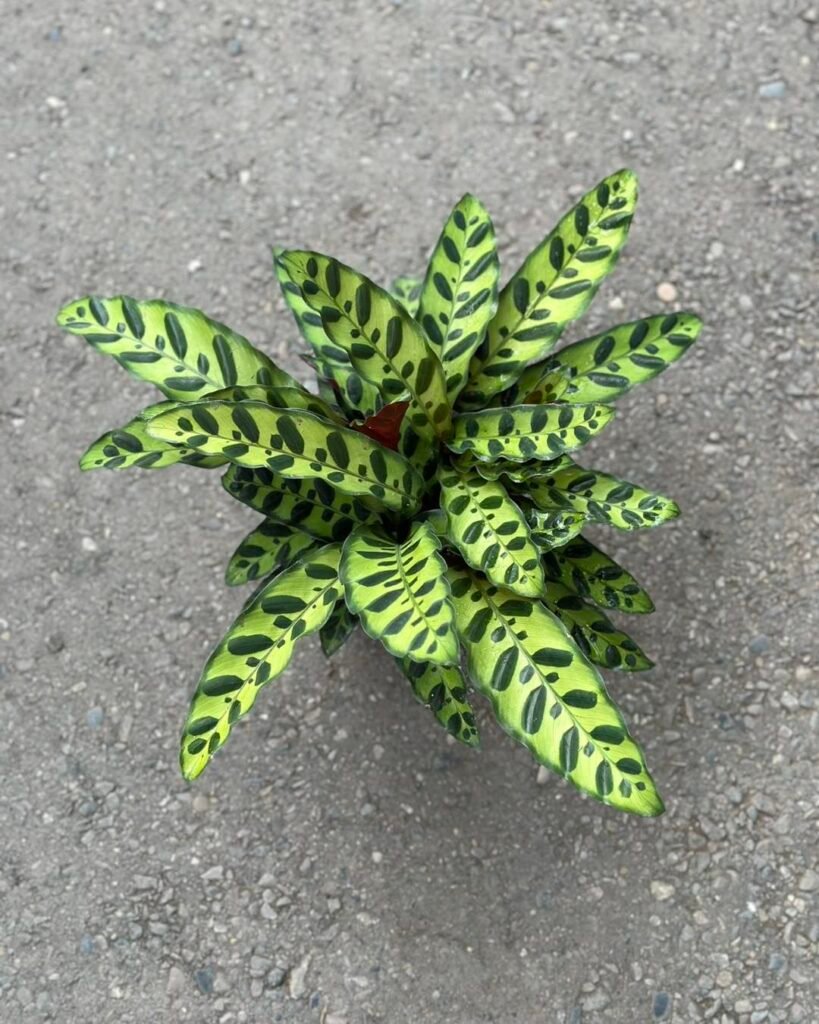
Here’s a short chart with information about the Rattlesnake Plant (Calathea lancifolia):
| Aspect | Information |
|---|---|
| Botanical Name | Calathea lancifolia |
| Common Names | Rattlesnake Plant, Prayer Plant |
| Plant Type | Tropical Perennial |
| Zones | 10-12 (typically grown indoors) |
| Exposure | Indirect light |
| Bloom Time | Rarely blooms indoors |
| Height/Spread | 1-2 feet tall, 1-2 feet wide |
Native to tropical regions of the Americas, the rattlesnake plant is a unique and striking addition to any indoor garden. Its lance-shaped, patterned leaves resemble the scales of a rattlesnake, adding an exotic touch to your living space. These plants prefer bright, indirect light and well-draining soil, making them a rewarding choice for those willing to provide the appropriate care.
Bringing a touch of nature indoors has countless benefits, from improving air quality to boosting mood and well-being. By incorporating these top 10 American native plants into your indoor garden, you can create a beautiful and serene oasis within the walls of your home. Whether you’re a seasoned plant enthusiast or a beginner, these low-maintenance beauties offer a diverse range of textures, colors and growth habits, ensuring there’s something to suit every taste and indoor environment. Embrace the beauty of nature and watch your living spaces come alive with the vibrant energy of these remarkable indoor plants.

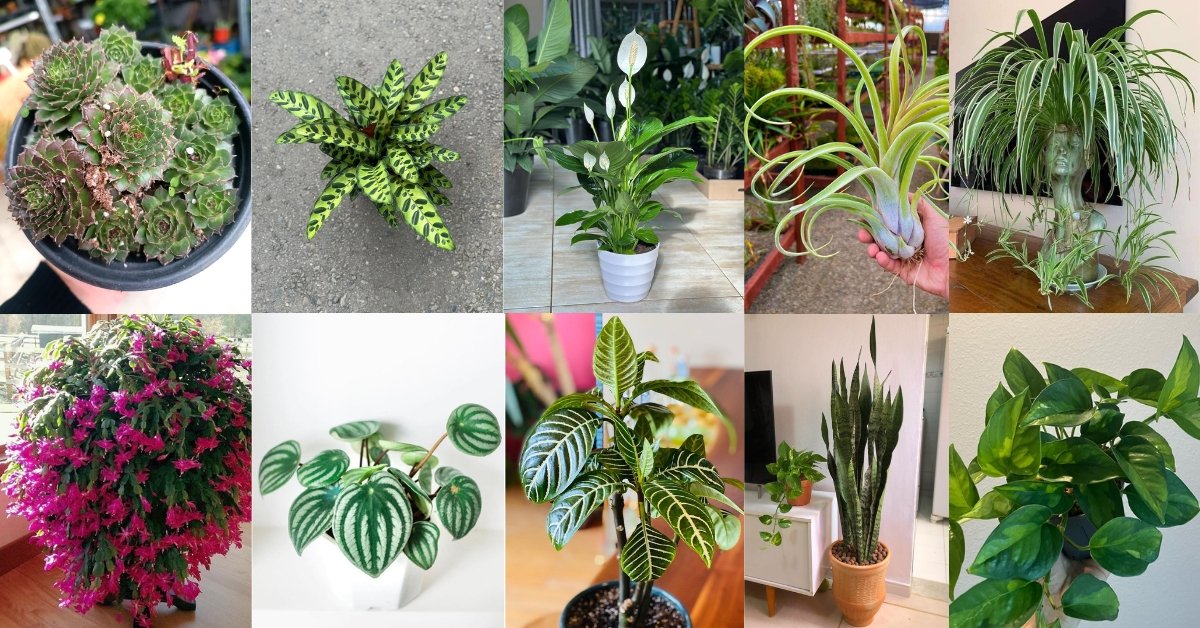
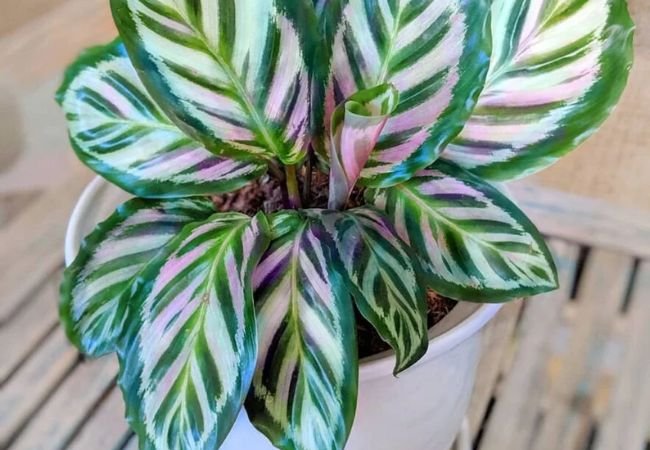


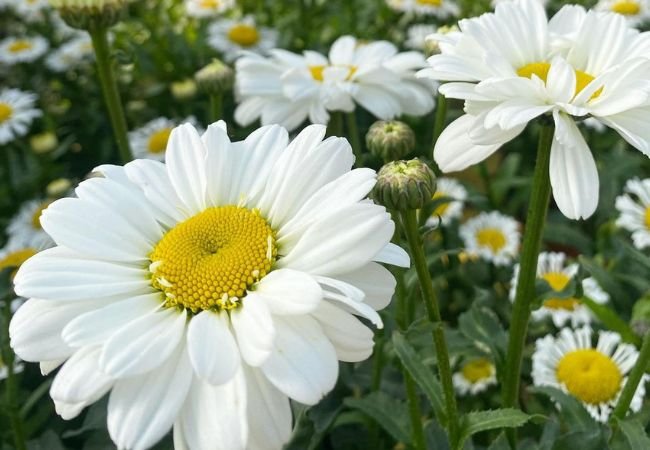
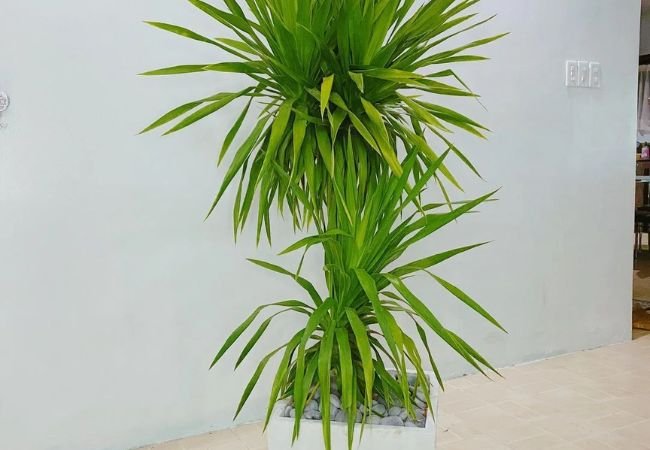
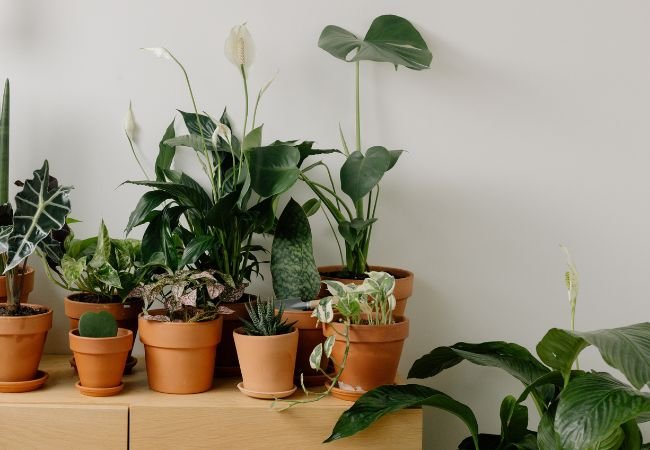
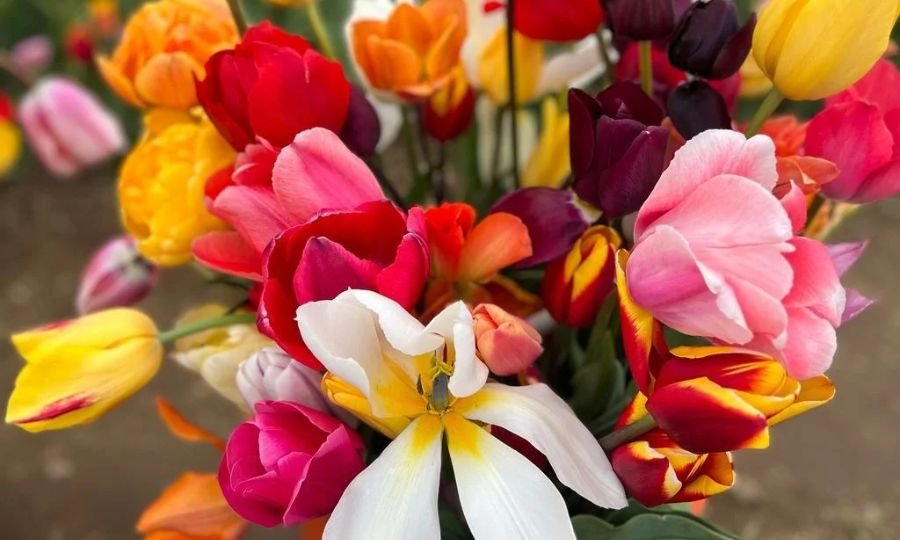
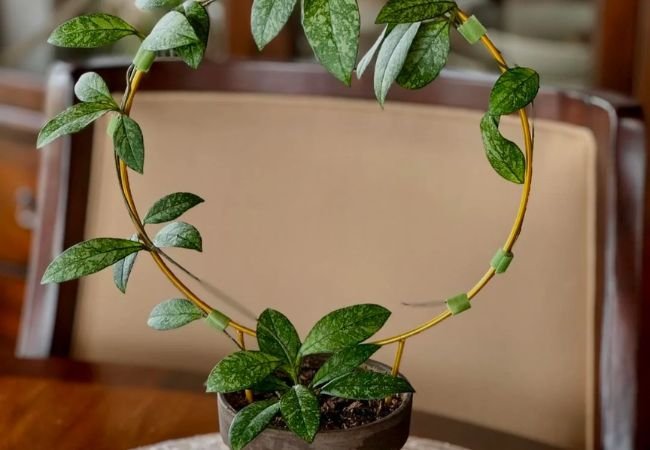
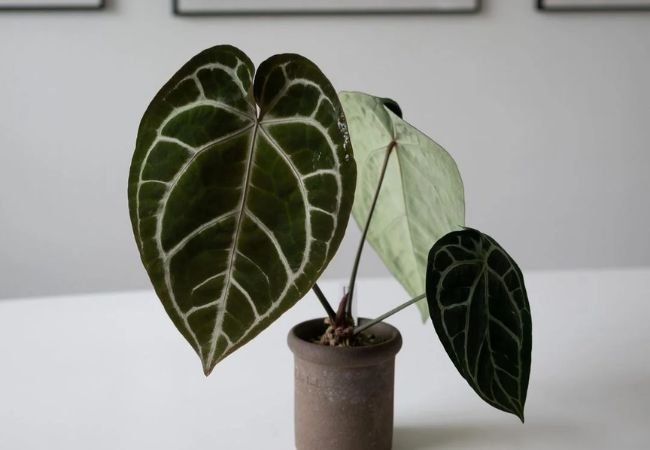
[…] plants are native to tropical and subtropical regions of Africa and Asia. They belong to the Asparagaceae family and […]
[…] with daffodils, grape hyacinths, or pansies for a vibrant and eye-catching display. Alternatively, plant tulips among early-blooming perennials like hellebores or English primroses for a harmonious blend […]
[…] The rowan (Sorbus aucuparia) is a remarkable tree that seamlessly blends cultural heritage, medicinal properties and ornamental beauty. From its symbolic significance in folklore to its practical applications in traditional medicine and landscaping, this versatile species has earned a revered place throughout history. By understanding its origins, characteristics, and cultivation requirements, we can unlock the full potential of the rowan and appreciate its enduring presence in our lives. Whether you’re a gardener seeking to incorporate its beauty into your outdoor spaces, an herbalist exploring its therapeutic qualities or simply a nature enthusiast, the rowan tree is a true testament to the wonders of the natural world and the rich tapestry of human connection with plants. […]
[…] are the embodiment of fragrant elegance in the plant world, captivating gardeners with their heavenly scent and exquisite white blossoms. These delicate […]
[…] of sedum cultivation, let’s take a moment to appreciate the remarkable nature of these plants. Sedums, also known as stonecrop, belong to the Crassulaceae family and boast an impressive […]
[…] the world of indoor and outdoor gardening, few plants can match the exotic allure of the anthurium. With its vibrant, heart-shaped blooms and glossy […]
[…] you’re looking to brighten up a room with some new plant life, this guide will walk you through everything you need to know about growing healthy, vibrant […]
[…] train the vines, gently guide them along the trellis or support system, securing them with soft plant ties or clips. This not only promotes air circulation but also allows the flowers and fruits to […]
[…] care, let’s take a moment to appreciate the origins and unique qualities of this enchanting plant. Hailing from the lush rainforests of Central and South America, the Monstera belongs to the […]
[…] provides excellent information on container gardening, including soil mixes and pot selection for indoor plants like Jessenia […]